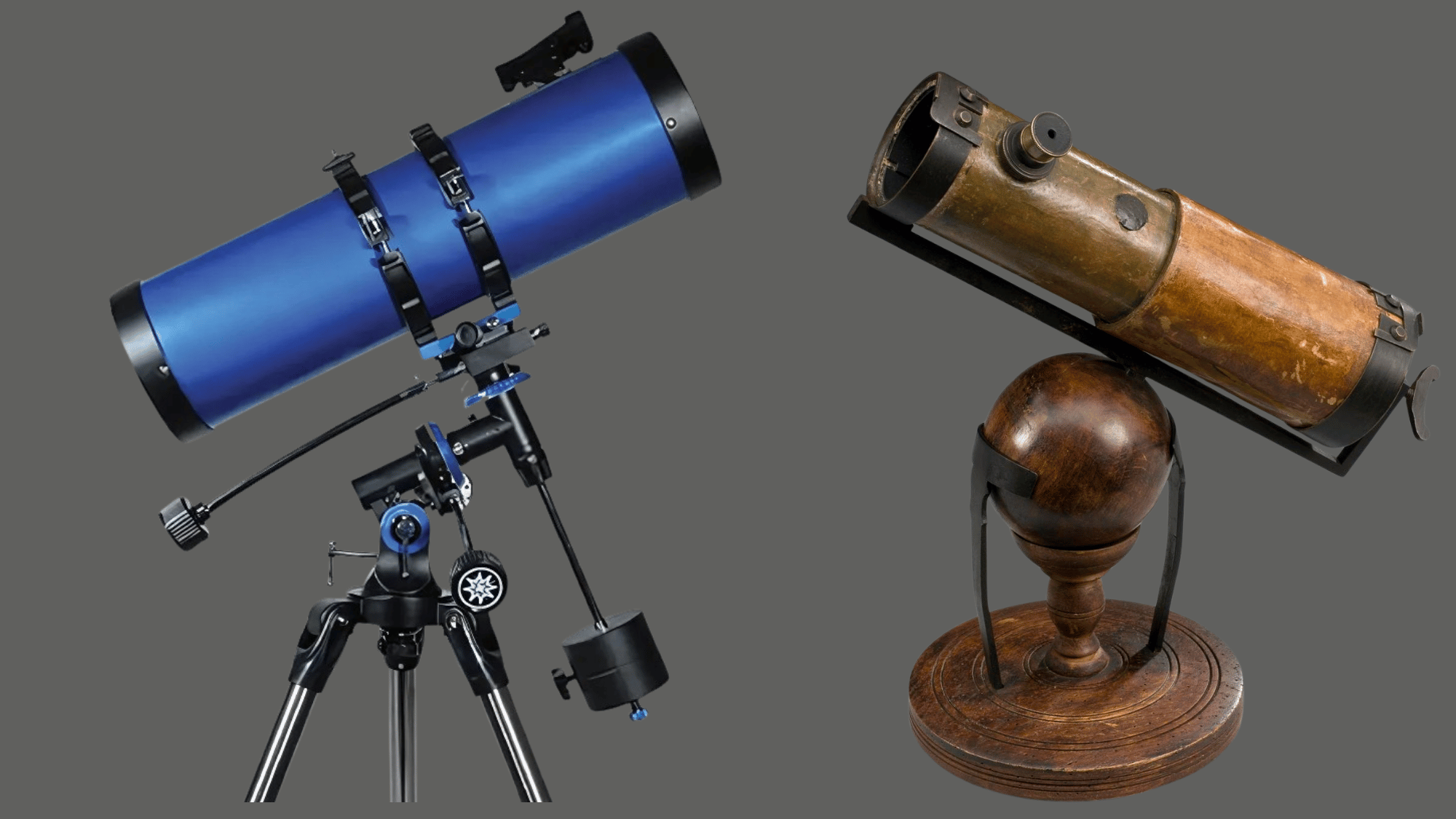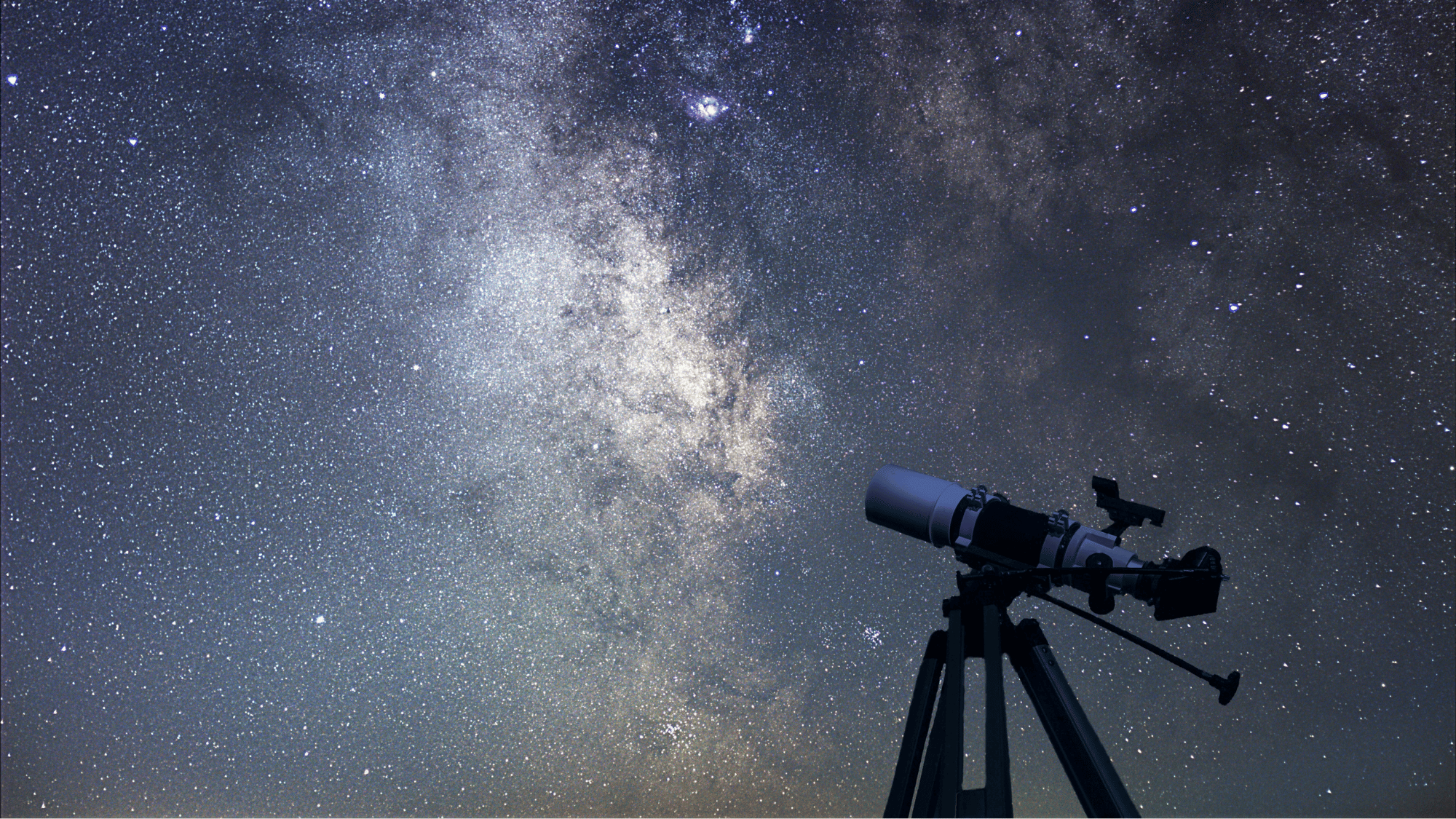A telescope is a tool that helps us see faraway objects in the sky, like the moon, planets, and distant stars.
People use telescopes for many reasons; some enjoy stargazing as a hobby, while others use them to learn more about space and science.
Telescopes make faint or tiny objects appear brighter and closer, opening a window to the universe. There are many kinds of telescopes, and each type works in its own way.
Some are simple and beginner-friendly, while others are powerful and used by scientists. Learning about telescope types helps you choose the best one for your needs.
Key Telescope Specifications
When looking at telescopes, three main specifications tell you how the telescope will perform: focal length, focal ratio, and aperture.
These features decide what you will see best, how bright objects will look, and how wide the view will be.
The focal length is the distance light travels inside the telescope before it comes into focus.
A longer focal length gives higher magnification, which makes planets and the moon appear larger, while a shorter focal length offers a wider view of the sky for galaxies and star clusters.
The focal ratio is written as f/number, such as f/5 or f/10. A lower f/number gives brighter, wider views, while a higher f/number provides more detail but a narrower field.
The aperture is the size of the main lens or mirror, and bigger apertures collect more light, making images clearer and sharper.
Types of Telescopes
There are three main types of telescopes, and each one works in a specific way to collect and focus light. Within these groups are several subtypes, each designed for specific purposes.
1. Refracting Telescopes (Refractors)


Refractor telescopes use glass lenses to focus light for clear viewing. Beginners love them for their simple operation and crisp images. They work great for observing planets, the moon, and the filtered sun. These are its subtypes:
i. Solar Refractor
A solar refractor is made for safe viewing of the sun. It uses special filters that block harmful light while revealing sunspots, solar flares, and other surface details.
These telescopes let observers study the sun’s activity up close without risk to their eyes.
They are designed for both hobbyists and educators who want to explore the dynamic behavior of our closest star.
ii. Petzval Refractor
A Petzval refractor includes extra lenses that correct optical distortions, giving bright, sharp, and wide images.
This design is often used for astrophotography because it captures large sections of the sky in clear detail.
Petzval telescopes are lightweight, easy to handle, and great for observing or photographing wide star fields, clusters, and nebulae with vivid clarity.
iii. Apochromatic Refractor (APO)
An apochromatic refractor, or APO, uses advanced lens elements to remove color distortion, also known as chromatic aberration.
It produces images that are crisp, bright, and true to color. APO telescopes are popular with astronomers and photographers who need precise and color-accurate results.
Although they are more expensive, their excellent optical quality makes them worth it for serious stargazers.
2. Reflecting Telescopes (Reflectors)


Reflector telescopes gather light using mirrors rather than lenses. They cost less than refractors for similar sizes. These work well for viewing dim galaxies and nebulae but require regular maintenance and care.
i. Newtonian Reflector
A Newtonian reflector uses a large main mirror and a small angled mirror to direct light to the eyepiece. It provides bright, wide views and is known for being affordable and easy to build.
Newtonian telescopes are ideal for beginners who want to explore both nearby and distant objects.
They are often lightweight and can be found in a range of sizes for different needs.
ii. Dobsonian Reflector
A Dobsonian reflector is a Newtonian telescope on a simple swivel mount.
It is famous for its large mirror, which gathers a lot of light, making it perfect for deep-sky viewing. Dobsonians are sturdy, easy to move, and simple to use.
They are often called “light buckets” because they capture so much starlight, allowing clear views of galaxies and nebulae.
iii. Classical Cassegrain Reflector
The Classical Cassegrain reflector uses two curved mirrors to fold the light path, creating a compact design with strong magnification.
It gives detailed views of planets, the moon, and other small, bright objects.
Because of its design, this telescope is shorter but powerful, offering long focal lengths without being bulky. It’s often used by advanced observers and schools for research and learning.
3. Catadioptric Telescopes


Catadioptric telescopes blend mirrors and lenses together for a compact design. They perform well for planets and deep-sky viewing. Amateur astronomers and photographers favor them for their versatility and balanced features. These are their subtypes:
i. Schmidt-Cassegrain Telescope (SCT)
The Schmidt-Cassegrain uses a combination of lenses and mirrors to produce clear and detailed images in a compact tube.
It offers an excellent balance between size and performance, making it a favorite for general use.
SCTs are well-suited for observing planets, galaxies, and nebulae, and they can easily attach to cameras for astrophotography. Their portability makes them popular for backyard astronomers.
ii. Maksutov-Cassegrain Telescope
The Maksutov-Cassegrain features a thick, curved lens and a mirror system that delivers sharp and high-contrast images.
It is especially good for viewing planets, the moon, and double stars. Maksutov telescopes are known for their durability and easy maintenance.
They are often chosen by users who want a small, portable telescope with clear and precise images.
iii. Maksutov-Newtonian Telescope
The Maksutov-Newtonian is a hybrid design that blends the wide views of a Newtonian with the optical clarity of a Maksutov.
It provides bright, sharp images with little distortion, making it great for both visual observing and photography.
This type offers a strong balance between wide-field performance and fine detail, appealing to hobbyists who want versatility without complexity.
iv. Rowe-Ackermann Schmidt Astrograph
The Rowe-Ackermann Schmidt Astrograph is built for astrophotography rather than visual observing.
It captures wide, bright, and high-quality images quickly, making it excellent for photographing galaxies and star clusters.
RASA telescopes use fast optics to reduce exposure time and produce detailed pictures of deep-sky objects.
v. Ritchey-Chretien Telescope
The Ritchey-Chretien telescope is a professional-grade design used in many observatories, including space telescopes.
It has two specially shaped mirrors that eliminate distortions and produce precise, wide-field images. RC telescopes are ideal for high-resolution photography and research.
Though they are complex and costly, they deliver outstanding clarity, making them the choice of serious astronomers and scientists.
Pros and Cons of The Telescope Types
Each type of telescope has its strengths and weaknesses depending on how it gathers light and what it’s used for. This table compares refractors, reflectors, and compound telescopes to help you understand which one best fits your needs.
| Telescope Types | Pros | Cons |
|---|---|---|
| Refractor | Produces sharp, clear images; easy to use and needs little maintenance | More expensive in larger sizes; heavier and limited in aperture |
| Reflector | Offers large mirrors for brighter views; great for faint deep-sky objects | Requires regular cleaning and alignment; bulkier design |
| Compound (Catadioptric) | Compact and versatile; works well for viewing and photography | Usually more costly; can take time to adjust to outdoor temperatures |
Choosing the Right Telescope for Your Interests


Selecting the right telescope depends on your interests and how you plan to use it.
For beginners, a small refractor or a Newtonian reflector is a smart choice because they are simple to set up and easy to use while still showing clear views of the moon and planets.
If you are interested in exploring faint objects like galaxies and nebulae, a Dobsonian reflector is a strong option because it has a large mirror that gathers more light.
For a balanced design that works well for both planets and deep-sky objects, a Schmidt-Cassegrain or a Makutov-Cassegrain is recommended.
If your main goal is photography, a Petzval refractor, a Rowe-Ackermann Schmidt astrograph, or a Ritchey-Chretien telescope will give excellent results.
Key Differences of Telescopes
Each type of telescope has its own strengths and weaknesses. Understanding these differences makes it easier to choose the right one for what you want to see in the sky.
| Type | Best For | Strengths | Limitations |
|---|---|---|---|
| Refractor | Planets, Moon, Sun | Sharp Images, Low Maintenance | Costly in Larger Sizes |
| Reflector | Galaxies, Nebulae, and Star Clusters | Affordable Large Apertures | Needs Cleaning and Alignment |
| Catadioptrics | All-Around Use, Photography | Versatile, Compact, Portable | More Expensive |
Quick Facts About Telescopes
Telescopes have an amazing history and are used in many different ways. Here are some quick facts that show just how powerful and exciting they can be.
- The Gran Telescopio Canarias in Spain has a mirror more than 34 feet wide, making it the largest single-mirror telescope on earth.
- The very large telescope in Chile uses four telescopes that can work together as one powerful instrument.
- The Hubble Space Telescope orbits Earth every 90 minutes, giving scientists a constant view of space.
- The James Webb Space Telescope can detect light from galaxies formed over 13 billion years ago.
- Many amateur astronomers build their own Dobsonian telescopes at home using simple tools and materials.
Conclusion
Telescopes have changed the way we understand our place in the universe.
They allow us to study objects that are too distant or too faint to see with the naked eye, leading to new discoveries every day.
Advances in design and technology continue to improve what we can see, making astronomy more exciting for both scientists and hobbyists.
No matter where they are used: space or a backyard, telescopes remain powerful tools for learning about the cosmos.


















